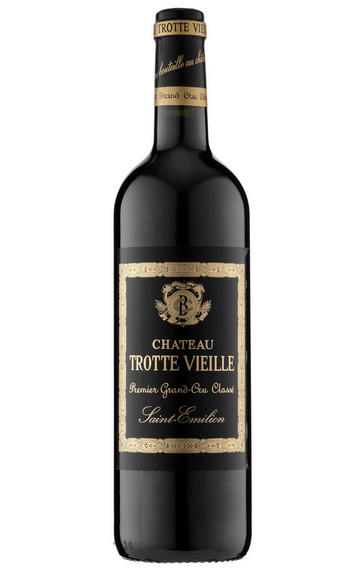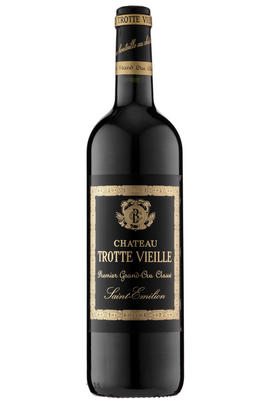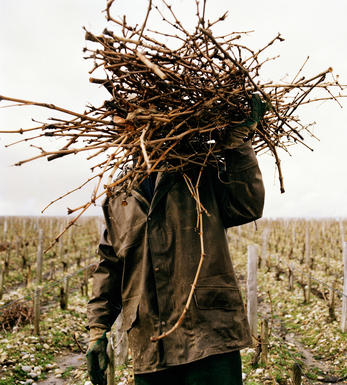
2020 Château Trotte Vieille, St Emilion, Bordeaux

Critics reviews
Drink from 2028 to 2055
Neal Martin, Vinous (May 2021)
Drink from 2030 to 2050
Antonio Galloni, Vinous (June 2021)
Excellent grip and tension through the palate, a well-judged and well-balanced Trottevieille, doing exactly as well as expected in a vintage that favours clay and limestone soils that keep freshness and focus. Elegant and sleek, plenty of tight blackberry fruit and a mouthwatering finish. Expands through the mid palate and then closes in on the finish, a confident wine where you feel the terroir is pulling the strings not the winemaker. Tasted twice, loved both times.
Drink 2028 - 2044
Jane Anson, Decanter.com, (May 2021)
Drink from 2024 to 2044
Lisa Perrotti-Brown MW, Wine Advocate (May 2021)
James Suckling, jamessuckling.com (April 2021)
Jeb Dunnuck, jebdunnuck.com (May 2021)
About this WINE

Chateau Trotte Vieille
A 1er Grand Cru Classé (B) St. Emilion château which has been owned by the négociant house Borie-Manoux since 1949. The company also owns Château Batailley in Pauillac and Château Beau Site in St-Estèphe and is now run by Philippe Castéja. Trotte Vieille (the trotting old lady) refers to the legend of an old woman who lived here in the 18th century and spent her time trotting around in search of local gossip.
The property is located on a plateau east of St-Emilion and the 10-hectare walled vineyard is planted with Merlot (50%), Cabernet Franc (45%) and Cabernet Sauvignon (5%). The grapes are hand-harvested and then fermented in small, temperature-controlled concrete vats. The wine is matured in oak barriques (80% new) for 18 months. It is bottled unfiltered.

St Émilion
St Émilion is one of Bordeaux's largest producing appellations, producing more wine than Listrac, Moulis, St Estèphe, Pauillac, St Julien and Margaux put together. St Emilion has been producing wine for longer than the Médoc but its lack of accessibility to Bordeaux's port and market-restricted exports to mainland Europe meant the region initially did not enjoy the commercial success that funded the great châteaux of the Left Bank.
St Émilion itself is the prettiest of Bordeaux's wine towns, perched on top of the steep limestone slopes upon which many of the region's finest vineyards are situated. However, more than half of the appellation's vineyards lie on the plain between the town and the Dordogne River on sandy, alluvial soils with a sprinkling of gravel.
Further diversity is added by a small, complex gravel bed to the north-east of the region on the border with Pomerol. Atypically for St Émilion, this allows Cabernet Franc and, to a lesser extent, Cabernet Sauvignon to prosper and defines the personality of the great wines such as Ch. Cheval Blanc.
In the early 1990s there was an explosion of experimentation and evolution, leading to the rise of the garagistes, producers of deeply-concentrated wines made in very small quantities and offered at high prices. The appellation is also surrounded by four satellite appellations, Montagne, Lussac, Puisseguin and St. Georges, which enjoy a family similarity but not the complexity of the best wines.
St Émilion was first officially classified in 1954, and is the most meritocratic classification system in Bordeaux, as it is regularly amended. The most recent revision of the classification was in 2012

Cabernet Sauvignon Blend
Cabernet Sauvignon lends itself particularly well in blends with Merlot. This is actually the archetypal Bordeaux blend, though in different proportions in the sub-regions and sometimes topped up with Cabernet Franc, Malbec, and Petit Verdot.
In the Médoc and Graves the percentage of Cabernet Sauvignon in the blend can range from 95% (Mouton-Rothschild) to as low as 40%. It is particularly suited to the dry, warm, free- draining, gravel-rich soils and is responsible for the redolent cassis characteristics as well as the depth of colour, tannic structure and pronounced acidity of Médoc wines. However 100% Cabernet Sauvignon wines can be slightly hollow-tasting in the middle palate and Merlot with its generous, fleshy fruit flavours acts as a perfect foil by filling in this cavity.
In St-Emilion and Pomerol, the blends are Merlot dominated as Cabernet Sauvignon can struggle to ripen there - when it is included, it adds structure and body to the wine. Sassicaia is the most famous Bordeaux blend in Italy and has spawned many imitations, whereby the blend is now firmly established in the New World and particularly in California and Australia.


Buying options
Add to wishlist
Description
Cabernet Franc 50%, Merlot 49%, Cabernet Sauvignon 1%
This was a vintage tailor-made for Trotte Vieille: its limestone and clay soils, and its cache of very old Cabernet Franc (some 19th century) could fully express themselves. The bouquet is intense, and surprisingly lush for a wine that is 50% Cabernet Franc. The wine has enormous presence in the mouth, with some leafy tannins from the Cabernet Franc, which really sings on the finish, its grassy notes wrapped in a viscous embrace with Merlot. There’s a chunky 15% alcohol but, just like the 100% new oak, it’s easily assimilated.
Drink 2026-2040
wine at a glance
Delivery and quality guarantee